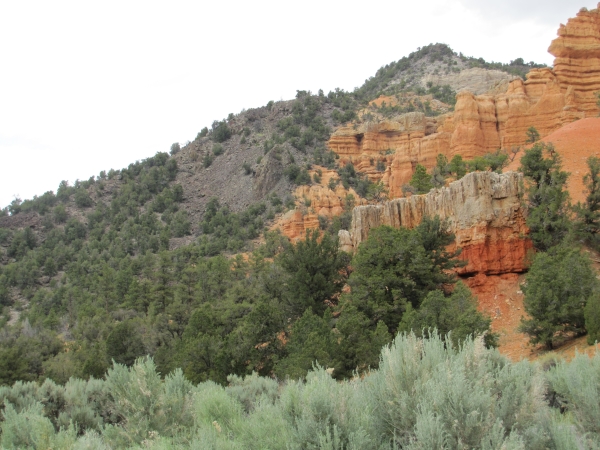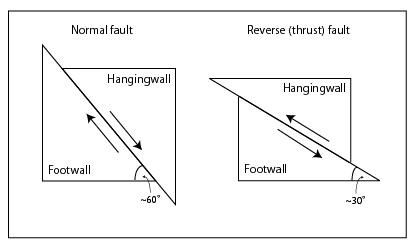
Faults:
In geology, a fault is a fracture or joint along which movement occurs. The fault trace is this fracture or joint as visible at the surface. Some of the terminology associated with faults is the hanging wall and foot wall. The hanging wall occurs above the fault plane, and the foot wall occurs below the fault plane. Another way of thinking about it is the hanging wall is always above the footwall.

There are three basic types of faults: normal, reverse, and strike-slip faults. A normal fault is where the hanging wall moves down relative to the foot wall. A reverse fault is where the hanging wall moves up relative to the foot wall. A strike –slip fault is where there is very little vertical motion; all motion is lateral.
Sevier Fault Zone:
The Sevier Fault is actually one of many faults that make up the Sevier Fault Zone. This is a series of faults that extend from southern Utah to the Grand Canyon. This fault that you see on the hillside juxtaposes the red Claron Formation that makes up Red Canyon and Bryce Canyon against black basalt. The basalt is a result of previous earthquakes and volcanoes in the area. These lava flows were then faulted and displaced over 600 ft in this location. The lava flows were dated at 5.1 million years old.
Questions:
1. What color of rock is the hanging wall, and what color of rock is the footwall?
2. Please infer what type of fault the Sevier Fault is.
3. What is the average slippage on this fault? (To find this convert feet to inches and divide this value by 5.1 million)
4. Estimate the width of the fault trace.
5. If so desired, feel free to post a picture of the area. (Not required)
References:
http://www.deseretnews.com/article/695260968/Sevier-Fault-capable-of-strong-quake.html
http://en.wikipedia.org/wiki/Fault_(geology)
http://www.pitt.edu/~cejones/GeoImages/7Structures/NormalFaults.html